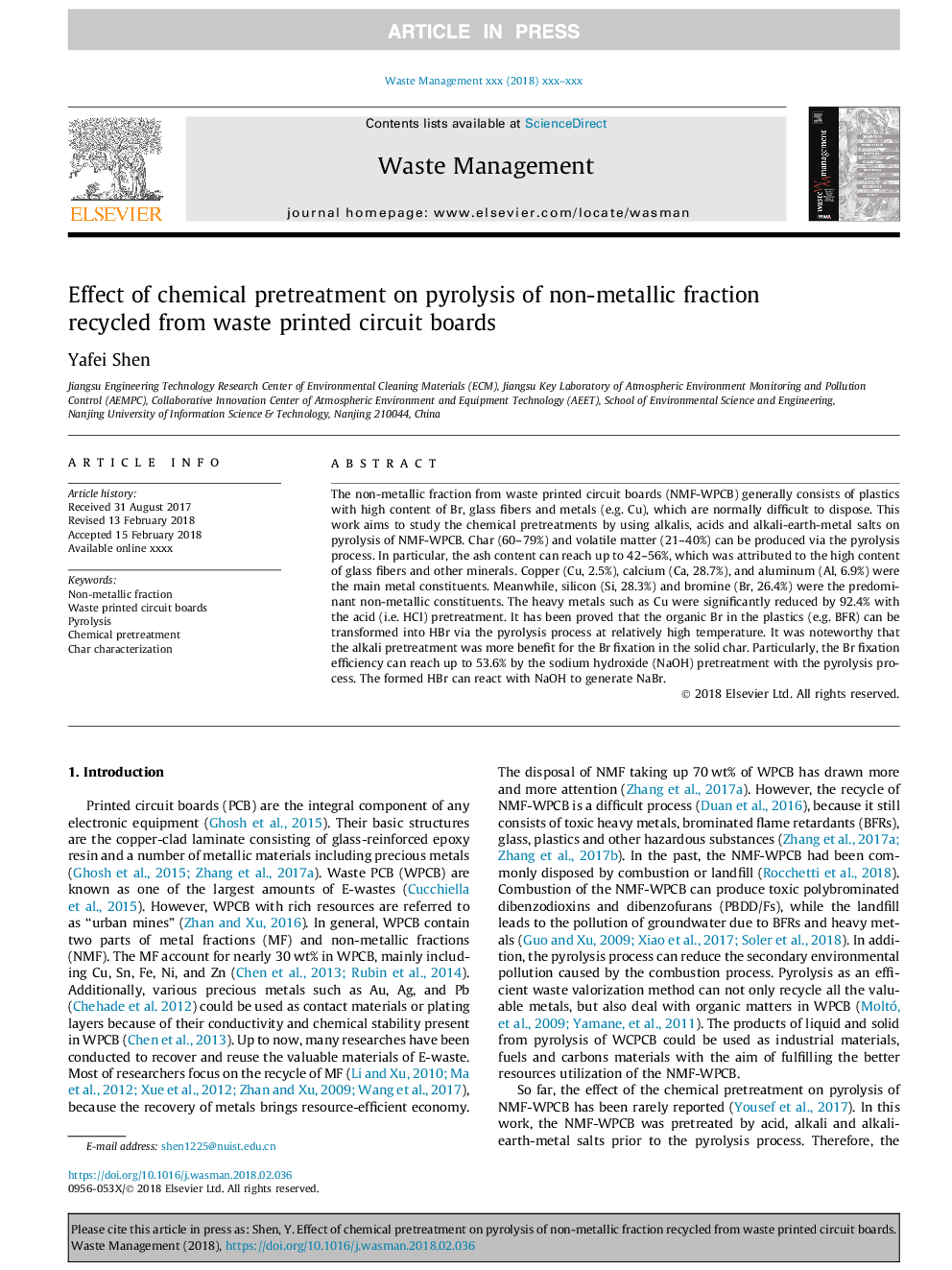| Article ID | Journal | Published Year | Pages | File Type |
|---|---|---|---|---|
| 8869701 | Waste Management | 2018 | 7 Pages |
Abstract
The non-metallic fraction from waste printed circuit boards (NMF-WPCB) generally consists of plastics with high content of Br, glass fibers and metals (e.g. Cu), which are normally difficult to dispose. This work aims to study the chemical pretreatments by using alkalis, acids and alkali-earth-metal salts on pyrolysis of NMF-WPCB. Char (60-79%) and volatile matter (21-40%) can be produced via the pyrolysis process. In particular, the ash content can reach up to 42-56%, which was attributed to the high content of glass fibers and other minerals. Copper (Cu, 2.5%), calcium (Ca, 28.7%), and aluminum (Al, 6.9%) were the main metal constituents. Meanwhile, silicon (Si, 28.3%) and bromine (Br, 26.4%) were the predominant non-metallic constituents. The heavy metals such as Cu were significantly reduced by 92.4% with the acid (i.e. HCl) pretreatment. It has been proved that the organic Br in the plastics (e.g. BFR) can be transformed into HBr via the pyrolysis process at relatively high temperature. It was noteworthy that the alkali pretreatment was more benefit for the Br fixation in the solid char. Particularly, the Br fixation efficiency can reach up to 53.6% by the sodium hydroxide (NaOH) pretreatment with the pyrolysis process. The formed HBr can react with NaOH to generate NaBr.
Related Topics
Physical Sciences and Engineering
Earth and Planetary Sciences
Geotechnical Engineering and Engineering Geology
Authors
Yafei Shen,
